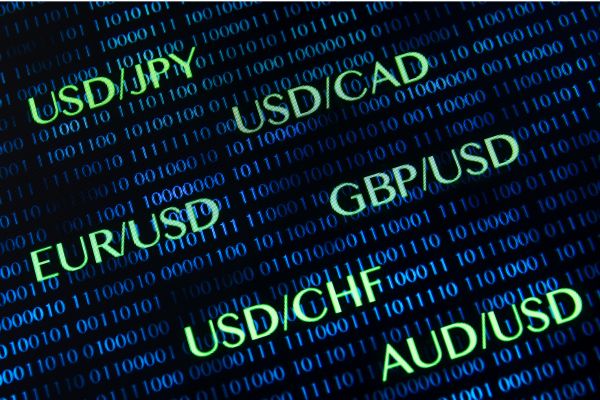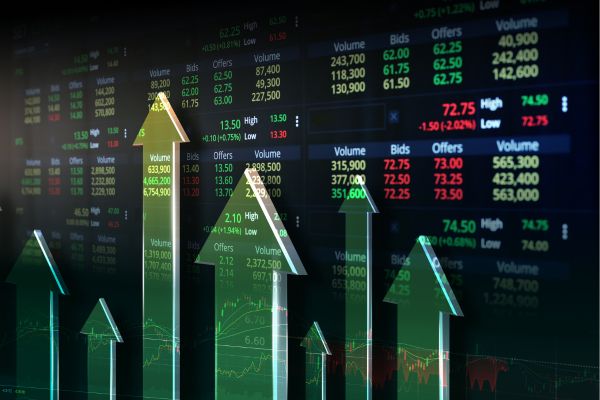What Do You Trade in Forex

Having an asset is a must if you want to profit from the financial market. By investing in these assets, you're up to profitable opportunities brought by the market’s price fluctuation.
In the forex market, you buy and sell currency pairs. The market lets you speculate the price movement between the pair.
The simple logic is that when you think that the currency is strengthening against the other in the pair, you position a trade and potentially profit from it.
Lesson Highlights:
-
Forex traders trade currency pairs in the financial market. They generate profit by speculating on the exchange rate movement of the pair.
-
To trade currency pairs, one must be able to trade the news, the currency pair correlation, and the technical data like support and resistance.
The Majors, The Minors, and The Exotics
Did you know you can use over 180 currencies in the forex market? That's a lot, right? What's more when you pair them? That'll be thousands of currency pairs!So, if you're new to the forex market, you'll likely be overwhelmed with this and end up either choosing the wrong pair to trade or not trying at all.
Well, here's the two things you should know:
-
There are three major categories you can use to narrow your selection.
-
Your decisions on choosing a pair should always be based on your strategy.
The Major Pairs
The major currency pairs (or majors) are the most volatile and, hence, the most profitable pairs among all. These pairs should always have a USD in the equation, which will go against another major currency.Considering that these currencies are from the healthiest and strongest economic countries, these currencies make the forex market volatile. With this, the major currencies become the heavily traded assets in forex.
Here's the list of majors you can trade to take advantage of the possibilities that majors might bring you:
-
EUR/USD
-
USD/JPY
-
GBP/USD
-
USD/CHF
-
USD/CAD
-
USD/AUD
-
USD/NZD
The Minor Pairs
Unlike major pairs, you won't see any trace of USD in the majors. Why? This is the category where the major (excluding the USD) are paired against one another. Hence, it's also called cross-majors.Even though they are not majors, minors still belong to the most traded pairs in the market. Remember, these are still major currencies from strong and healthy economic countries. Many traders are still interested in trading these pairs due to their economic importance and potential for profit.
When you want to trade minors, you can choose from these pairs:
-
EUR/GBP
-
EUR/AUD
-
GBP/JPY
-
CHF/JPY
-
NZD/JPY
-
AUD/JPY
-
GBP/AUD
-
GBP/CAD
-
CAD/JPY
-
NZD/JPY
The Exotic Pairs
In the forex market, emerging markets still have a place. These emerging markets are the countries starting to engage in the financial market.Here's the factor you can use to spot an exotic currency;
-
When it experiences economic growth
-
When it has a liquid debt and equity market
-
When foreign retail traders can access it
-
When it has a developed financial regulatory system
Trading exotic currencies presents unique opportunities for profit and portfolio diversification. Although, it's important to note that these currencies are among the least traded in the forex market.
With this, the market will likely be less liquid and less volatile. Hence, it may take time for your trade to gain returns because of its slow market movement.
Here is the list of exotic market pairs if you want to diversify your portfolio;
-
EUR/TRY (Turkish lira)
-
GBP/ZAR (South African rand)
-
AUD/MXN (Mexican Peso)
-
USD/THB (Thai baht)
-
JPY/NOK (Norwegian krone)
-
USD/PLN (Polish zloty)
-
EUR/NOK (Norwegian krone)
-
JPY/TRY (Turkish lira)

How To Trade Currency Pairs
When you ask traders for the best practices to profit from the market, you'll get different answers. But there will surely be a common answer: To anticipate the market movement.But you may ask, "How can I do that?"
Here are the five indicators that show you potential market movement;
1. Support And Resistance
The most common indicators traders use are the currency's support and resistance. Even beginner traders use this to anticipate the market trend.This tool is mainly used by technical traders. It uses the historical market data of the currency pair and inputs it into the trading chart for traders' reference.
It shows the estimated chart level where the pair's exchange rate increases and decreases.
-
Support: When the price point is nearing the support level, the market is expected to experience a downward trend.
-
Resistance: Once the price point reaches the resistance level, the market tends to have an upward trend.
2. Political Events
The currency value will also move when a political event happens in its respective country. That's because political events drive up market sentiments and market sentiments effect the market.Remember, when the market sentiment is positive, the currency value rises because of demand influx. Meanwhile, when it's negative, the currency value will likely depreciate because the traders tend to stray away from it.
Here are the political events you should watch out for when trading the news:
-
Revision of economic policy
-
Election results
-
Geopolitical conflicts
3. Economic Factors
The currency's economy comes hand in hand with its value. That's why trading the news is important to yield profitable results. You must always be on the lookout for economic changes and be informed of the best practices to capitalize those changes.Here are the economic factors that drive up the value of the currency:
-
Fiscal policy
-
GDP (Gross Domestic Product)
-
Inflation rates
-
Monetary policy
-
Employment reports
4. Currency Correlation
If you're not new to the market, you've probably noticed that when one currency pair goes up, the other pair tends to go down. They technically operate like a seesaw.Well, that's because of their currency correlation.
The currency correlation is the relationship of currency pairs with each other in terms of market movements. There are two types of currency correlations:
-
Positive correlation: When the currency pairs move in the same direction.
-
Negative correlation: When the currency pairs move in an inverse direction.
Trading the correlation is more of a risk management strategy. This simply shows the importance of diversifying your trade by trading a set of pairs that are negatively correlated with one another.
Now that you've learned the nitty-gritty concepts of forex trading, the next lesson will be your cheat sheet for the essential forex trading jargon you must master.
Forex Lesson Outline

- Lesson 1: Introduction to Forex Market
- Lesson 2: Introduction to Online Trading
- Lesson 3: The Major Forex Sessions
- Lesson 4: What Do You Trade in Forex
- Lesson 5: Mastering Forex Trading Jargons
